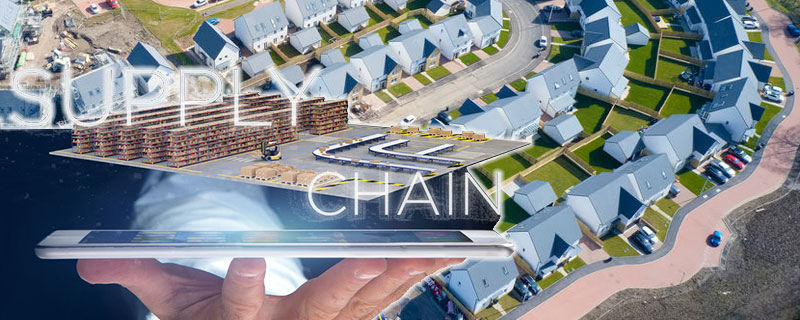Lift Barriers to MMC and Deliver Affordable Housing
The only way that new ‘green’, efficient, safe housing can be built in the UK at the speed and scale required is if modern methods of construction (MMC) are more widely adopted in the housebuilding market, but the industry needs help to deliver the benefits MMC offer, experts have said.
Gilbey said:
“The UK government has a target of building 300,000 new homes in England each year, but the chronic skills and labour shortage and stagnant productivity that plagues the construction sector present a significant barrier to traditional housebuilding. A shift to off-site factory manufacturing of standardised building components, among other modern methods of construction, can not only help housebuilders realise huge improvements in productivity – it can also cut both embodied carbon and the amount of waste created by the construction industry and over time will lead to net zero homes.”
“However, as the Built Environment Committee has exposed, the MMC industry has faced problems in the UK, with a number of specialist providers of volumetric housing having gone out of business in recent years. For the benefits of MMC to be realised, the industry needs a long and stable pipeline of projects to make adopting MMC commercially viable – the level of investment needed to establish new factories and overhaul traditional construction business models is significant. The committee has highlighted reasons why this pipeline of work has not emerged in the way it might,” he said.
In a letter to housing secretary Michael Gove (18-page / 347KB PDF), chair of the Built Environment Committee, Lord Moylan, said the committee has “limited confidence that a coherent plan to encourage the use of MMC is in place”.
The committee highlighted the link between potential growth in the use of MMC and the government having “a clear strategy and a good understanding of how the industry operates” and called on the government to “publish its full strategy for MMC now or, if it requires updating, by no later than the end of March 2024”.
Currently, the government provides direct loans to some MMC companies and supports the adoption of MMC through the Affordable Homes Programme (AHP). The committee said, though, that the government should assess whether those measures are “the most effective way to support the establishment of new MMC companies and their research and development”.
The committee also identified a disconnect between the benefits MMC have to offer and the demand specialist MMC manufacturers are seeing for their services. It said the government should “undertake further research … to determine if there are genuine policy barriers to major housebuilders increasing their use of MMC”.
Among the other issues it raised, the committee said the government should update documents that support the housebuilding industry to assess its compliance with building safety regulations to make it easier for the industry to assess how MMC map to the regulatory requirements. It said the government also must do more to ensure insurers provide the warranties developers need when using MMC.
Pinsent Masons has consulted with over 100 industry leaders across the UK construction and house building industry to examine the practical barriers and potential solutions to adopting modern methods of construction. During this two-year process of collecting the views and evidence gathering, the team of experts at Pinsent Masons has been able to identify the main barriers to MMC and gain a granular view of the practical and legal problems facing the industry.
Together with industry bodies such as the Royal Institution of Chartered Surveyors, Constructing Excellent and Make UK Modular, and individual companies such as TopHat, Pinsent Masons wrote to housing secretary Michael Gove calling on government to do more “to unlock private investment to scale the adoption of modern methods of construction”.
One of the recommendations made in the letter was that stamp duty land tax (SDLT) be reduced for new homes built to an energy performance certificate (EPC) ‘A’ standard. Pinsent Masons has estimated that implementation of the measure would have minimal impact on public finances but bring real benefits by avoiding the need for “expensive retrofits” to millions of new homes that would not otherwise be ‘net zero’ compliant.
Another recommendation was to increase the percentage of new homes built using MMC under the AHP.
Ultimately, according to Robinson, a clear pipeline of projects and incentives are needed to support the industry in investing in a still very nascent approach to building the homes that Britain badly needs.
Robinson said:
“MMC is in all reality the only hope of achieving low carbon and net zero homes, at scale. MMC also allows new materials to be used – and new innovative approaches to be adopted – and has been shown to have the potential to significantly cut embodied carbon in built assets.”
“Creating digital twins and using technology to gather data on how homes are operated can promote long-term improvements to the efficiency of how we use our homes and to the way they are designed, while a platform approach to design also promotes the creation of a circular economy in the construction sector by enabling standardised components to be re-used. In the context of ever-more stringent building safety requirements and growing costs of disputes where defects are identified, developers also stand to see improvements in the quality of building products by moving away from making and installing them in a bespoke way on construction sites to adopting standardised production processes at off-site factories,” he added.
SOURCE: Pinsent Masons









Leave a Reply
Want to join the discussion?Feel free to contribute!